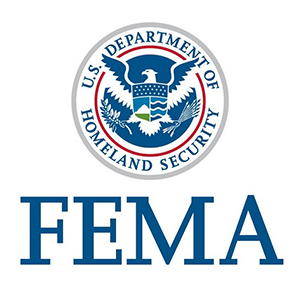FEMA 361 - Safe Rooms for Tornadoes and Hurricanes
What is FEMA 361?
FEMA 361, also known as FEMA P-361, is the federal guidelines for the design and construction of safe rooms. FEMA (the Federal Emergency Management Agency) first developed the guideline for the construction of storm safe rooms in 2000, to help with standardizing designs for storm shelters and tornado safe rooms. FEMA’s P-316 would then become the basis of almost all safe room storm shelter standards and building codes.
Read more about building codes and funding below.
Find Out More Information and See If You Qualify for FEMA Funding on Storm Doors
Building Codes for Storm Safe Rooms
FEMA P-361 is not an enforceable code or standard. However, the International Code Council (ICC) is the major association that is dedicated to developing model codes and standards used in the design, building and compliance process to construct safe, sustainable, affordable and resilient structures. Most U.S. communities and many global markets choose the International Codes. The ICC standards and codes are used to develop the International Building Code (IBC) and International Residential Code (IRC). Most major building code laws involve adopting all or most of the IBC and IRC.
Using the first edition of the FEMA 361 as a guide, the National Storm Shelter Association (NSSA) and the ICC worked together to develop a national consensus standard for storm shelters. In 2002, the ICC-500, entitled “Standard for the Design and Construction of Storm Shelters”, was written to have a code specific standard for the design and building of a safe storm room.
In 2009, the IBC and IRC both incorporated ICC 500 into their building codes to regulate the design and construction of storm safe rooms, safe room storm shelters as well as safe room doors.
FEMA Funding
Although the ICC 500 sets standards that when adopted by local building code agencies become enforceable, FEMA P-361 is designed to be a best practice guideline. FEMA 361 has more stringent requirements that are intended to provide “near-absolute protection”. This becomes a major difference when designing storm safe rooms or adding hurricane doors that want to take advance of FEMA storm shelter grants or any FEMA safe room funding.
A FEMA tornado shelter has additional requirements, such as requiring certified 250 mph wind speed proof materials to be used in all safe room storm shelter areas including the
FEMA provides Hazard Mitigation Assistance (HMA) funding to eligible states, tribes, and territories that, in turn, provide the funding to local governments to assist in reducing overall risk to people and property.
If you are considering building a safe room you can find information about various types of funding from FEMA.
StormDefender™
Cornell’s StormDefender™ Safe Room Door is designed specifically with FEMA tornado safety in mind. Tested and certified to stringent ICC 500-2014 and FEMA P-361, third edition code standards, the StormDefender has a sleek construction, unlike any other hurricane proof doors available elsewhere. This provides tornado safe room doors that are virtually undetectable, have minimal protrusion into the safe room space and allow for open and airy tornado room designs instead of dark and claustrophobic. When you need a steel door for
Check out the FEMA test results!






